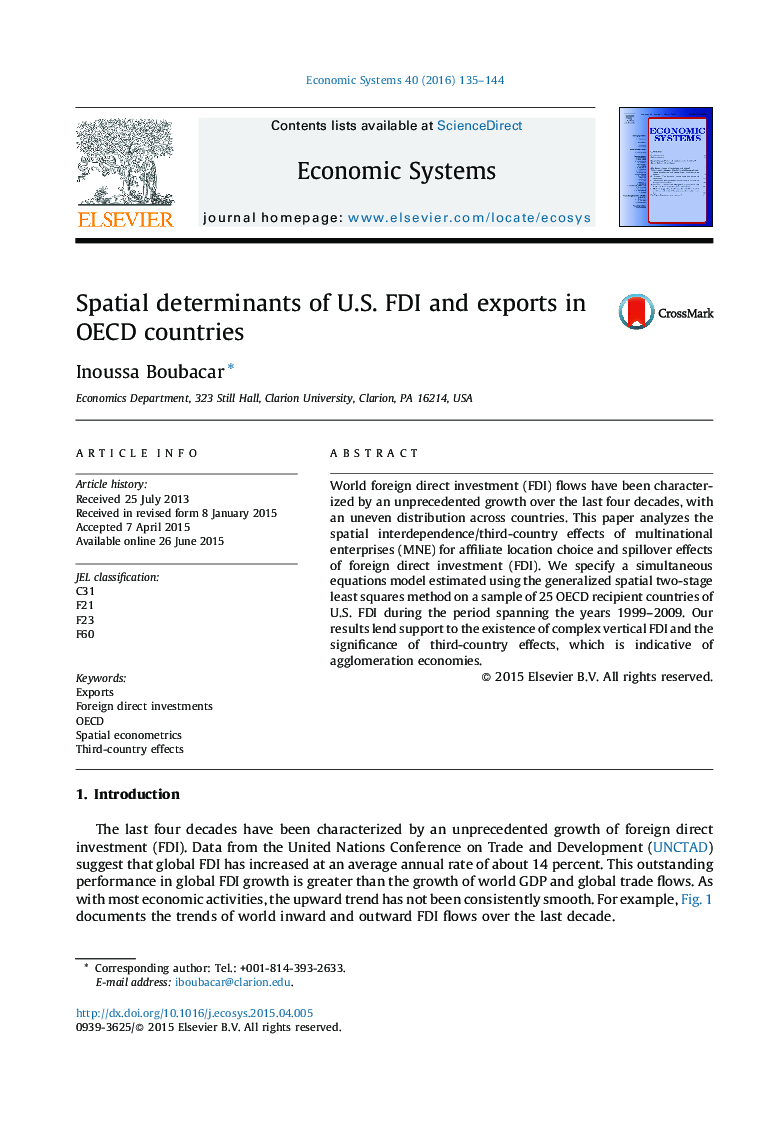| Article ID | Journal | Published Year | Pages | File Type |
|---|---|---|---|---|
| 5056261 | Economic Systems | 2016 | 10 Pages |
â¢We develop a simultaneous equations model to study the intertwined relationship between FDI and exports.â¢The analysis focuses on U.S. FDI outflows and exports in 25 OECD countries.â¢We document the significance of third-country effects using a spatial econometric framework.â¢The effects of distance, a proxy for transportation costs, are less pronounced in the simultaneous equations model when spatial factors are accounted for.â¢We provide a tractable model to analyze the determinants of trade and FDI flows.
World foreign direct investment (FDI) flows have been characterized by an unprecedented growth over the last four decades, with an uneven distribution across countries. This paper analyzes the spatial interdependence/third-country effects of multinational enterprises (MNE) for affiliate location choice and spillover effects of foreign direct investment (FDI). We specify a simultaneous equations model estimated using the generalized spatial two-stage least squares method on a sample of 25 OECD recipient countries of U.S. FDI during the period spanning the years 1999-2009. Our results lend support to the existence of complex vertical FDI and the significance of third-country effects, which is indicative of agglomeration economies.
